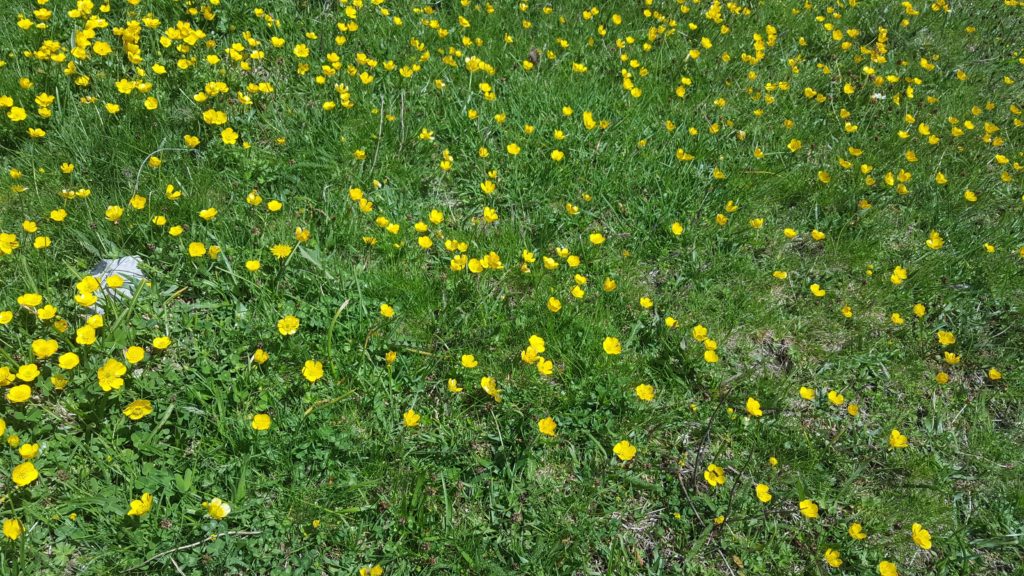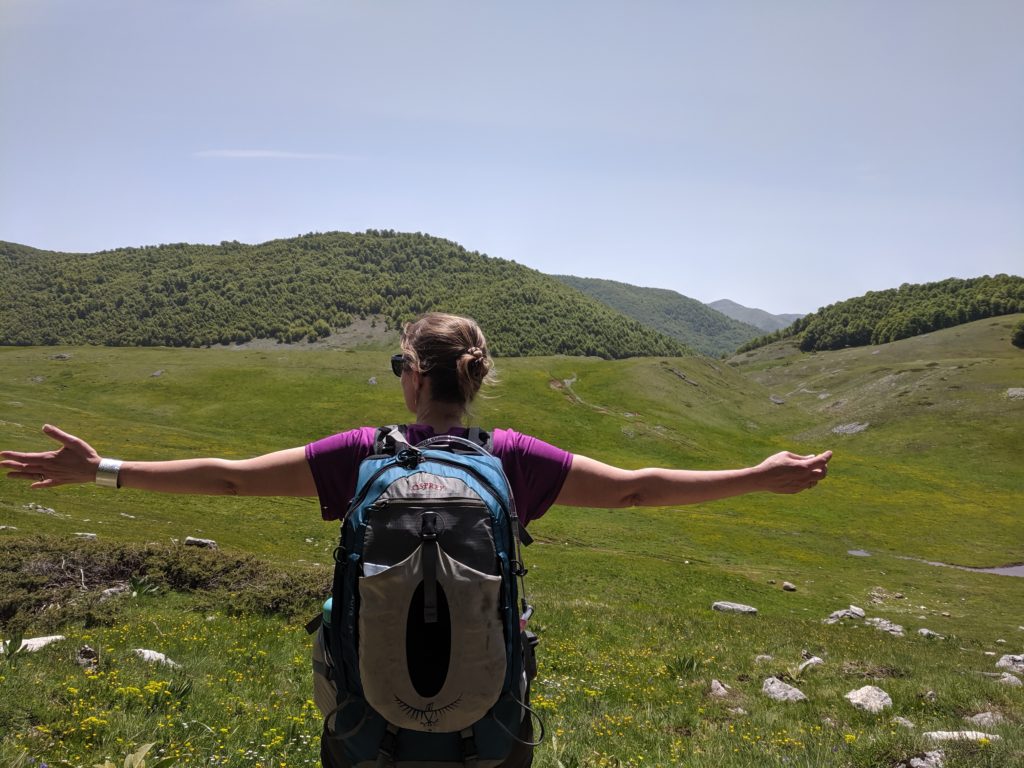After nearly nine months of Roman stone streets and traffic, punctuated by the occasional villa-excursion, we were ready to explore the Italian outdoors. Last weekend, my daughter and I spent a fantastic 3-days backpacking through Parco Nazionale d’Abruzzo. It was not easy to figure out how, exactly, to manage this adventure. We asked friends, searched on-line, contacted guiding companies, and stared at maps. How could it be so difficult to plan a hiking trip? Well, it turns out that things are done differently it Italy. In hindsight, of course things are done differently in a different country but, heading into this adventure, there was a lot we did not yet understand. When traveling or living in a new country, we expect to discover new ways of thinking or of being. It is especially eye-opening to uncover variation in things you had no idea could vary at all … like hiking! It’s humbling and also fascinating.
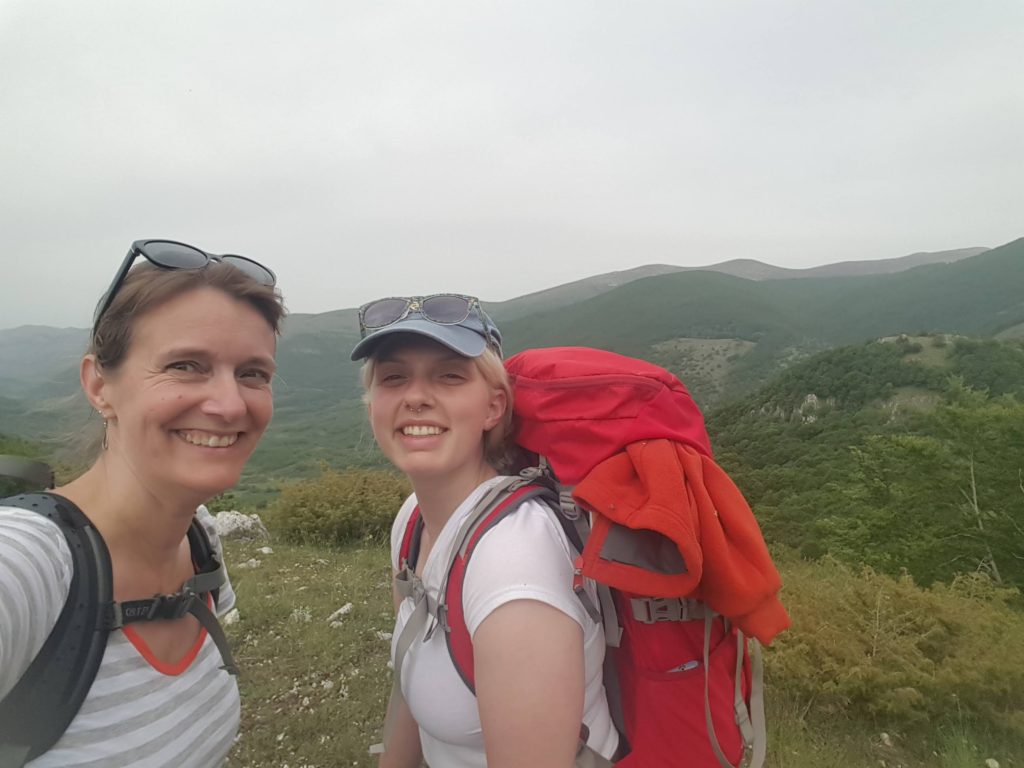
First things first, we needed a map and a guidebook. There is an on-line emporium where we found a map which turned out not to have clear trail markings and a great guidebook in English, Live the Park, full of ecological detail and suggested trails. Eventually we found a better map at a local outdoor shop and even an on-line map but, during the planning stage, we really had amazingly little to go on. I sent e-mails to the two guiding companies in the park, explaining that we were reasonably experienced hikers and just needed a suggested route for a 3-day backpacking trip. The folks at EcoTour (informazioni@ecotur.org) sent back a recommendation for linking two huts and for a place to stay in Pescasseroli. It wasn’t a detailed, verbose reply but, finally, we had enough detail to get started. We ended up contacting each recommended hut by WhatsApp to book reservations and confirm hiking information. When I asked how to get from hut to hut, the reply came “A1 Z1 Z3 T2 T1 and T5.” Hmmm….
We dug our equipment out of the closets and out of the strange storage system that evolves when moving across continents, rented a car (challenging in its own right), and headed out, thankful for Google maps and air conditioning.
After escaping Rome, the first hour is highway driving. The second hour is a climb up winding roads into the hills. Luckily we timed this to coincide with a stupendous sunset. By the time we reached the Via della Piazza B&B, we were starving but calm and happy. The room was charming and the pizza, just a few blocks away, came served on a board carved with a wolf. We had made it to the mountains.
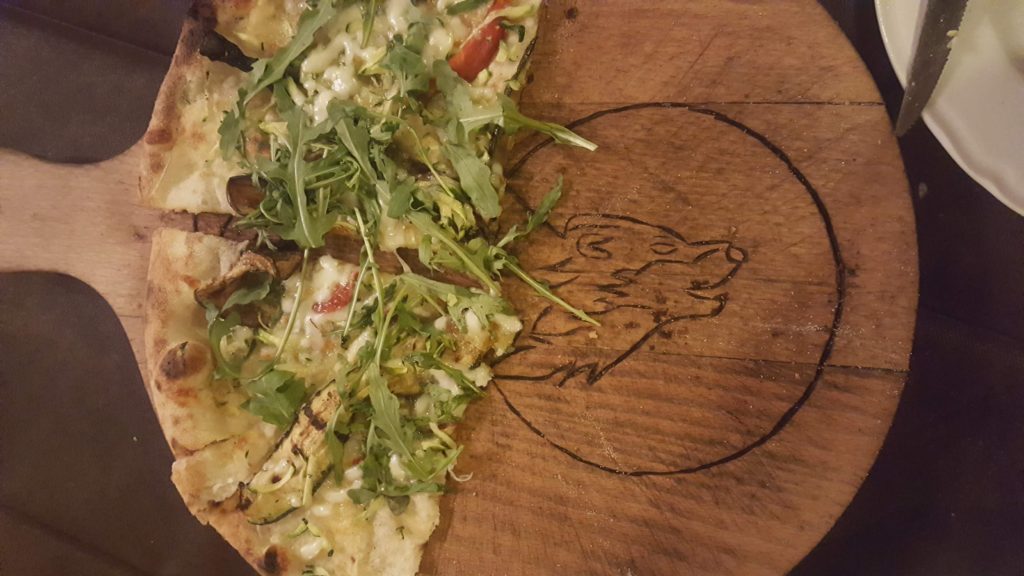
At breakfast, we had a fantastic conversation with Salvatore, the B&B proprietor, who luckily had lots of mountain experience. He described the entire hike to our first hut and guided us to the Avenza Maps app where we downloaded an off-line map of the park through which we could access our location via GPS. Happily, it even displayed trails like “A1” and “Z3”! He explained how to get to the beginning of the trail and helped us park our car in a good spot for the three days we would be away. We filled our water bottles, locked all non-essentials into the vehicle, threw on our packs, commissioned a few sandwiches in town, and headed up the A1 trail. Alone. There was barely a sign or trail marker and we would see only one other human for the next six hours.
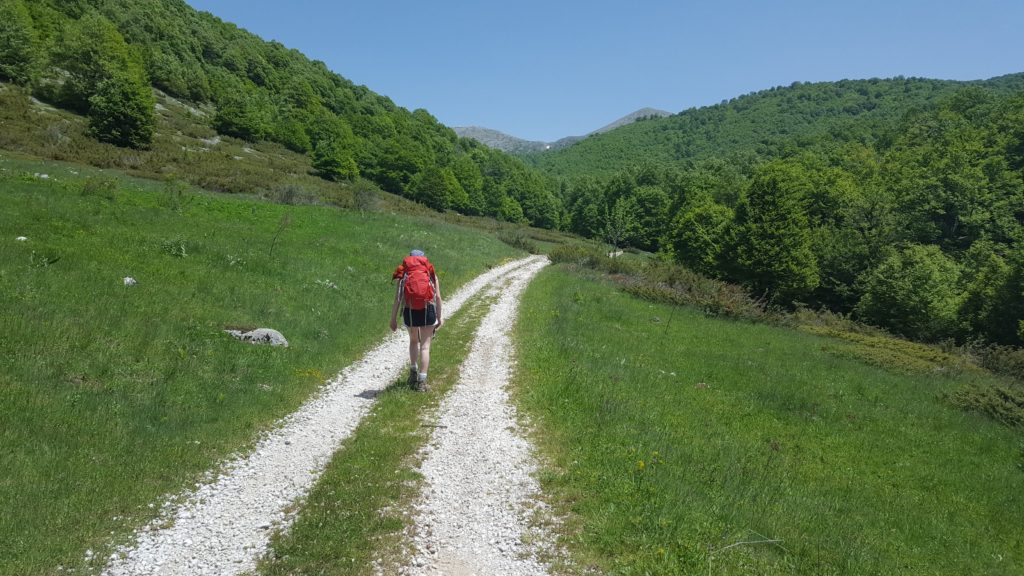
Somehow, with all the villages and roads in the park, I had imagined that I would be disappointed by the wilderness. In fact, we were as alone as I had ever been in nature – no rangers, no cell phone service, no fellow hikers, no sign in and sign out system at the trailhead … wait, no trailhead! We just followed a white rock path that had been, at times, both a road and a river. The way led gently up through bright green forests and we were super excited to arrive at a halfway hut named after a princess. Would it serve cold drinks?
Just before reaching the hut, we observed some fresh bear poop in the middle of the trail. Exciting! Alas, when we arrived at the hut, it was just a small stone structure with a lovely sign (indeed it did seem to be named after a princess). It was bolted shut and would barely provide shelter in a storm let alone refreshments or refuge from the bear which had grown significantly more real in our minds after two large Red Deer had bolted across the path in front of us (surely being chased by something the size of a polar bear). Across from the hut there was an old weathered sign about bear in Italian. I optimistically interpreted it to mean that these were vegetarian bear but we were still not quite ready to break out our picnic. Upwards on onwwards! We trekked past more bear poop and without a sign of another human. The way steepened and eventually opened onto a breathtaking meadow full of wildflowers in every color. Without exactly admitting it, we picked a picnic spot which was shady but at which we could not be surprised by the million or so bear which, in our minds, now surrounded us. Cheese and bread sandwiches, so simple, so delicious.
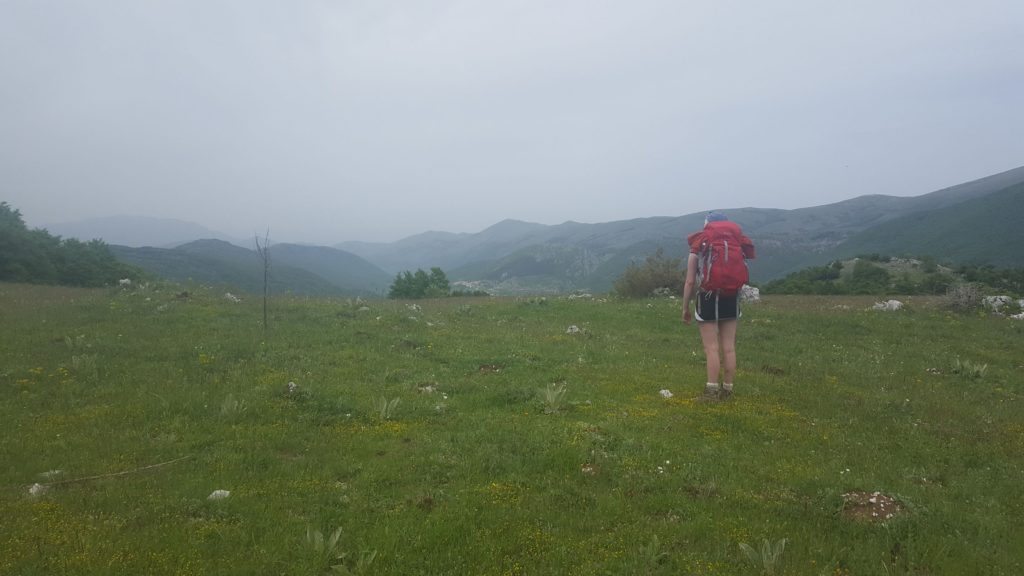
In the next small meadow, we discovered about thirty horses grazing on bright green grass. I made a joke about how the only thing scarier than bear were wild horses and, at about that moment, a stallion perked up his ears and started moving purposefully toward us. And then, the other 29 horses followed suit, moving quickly and forcefully in our direction. Yes. We hide behind a tree feeling really silly.
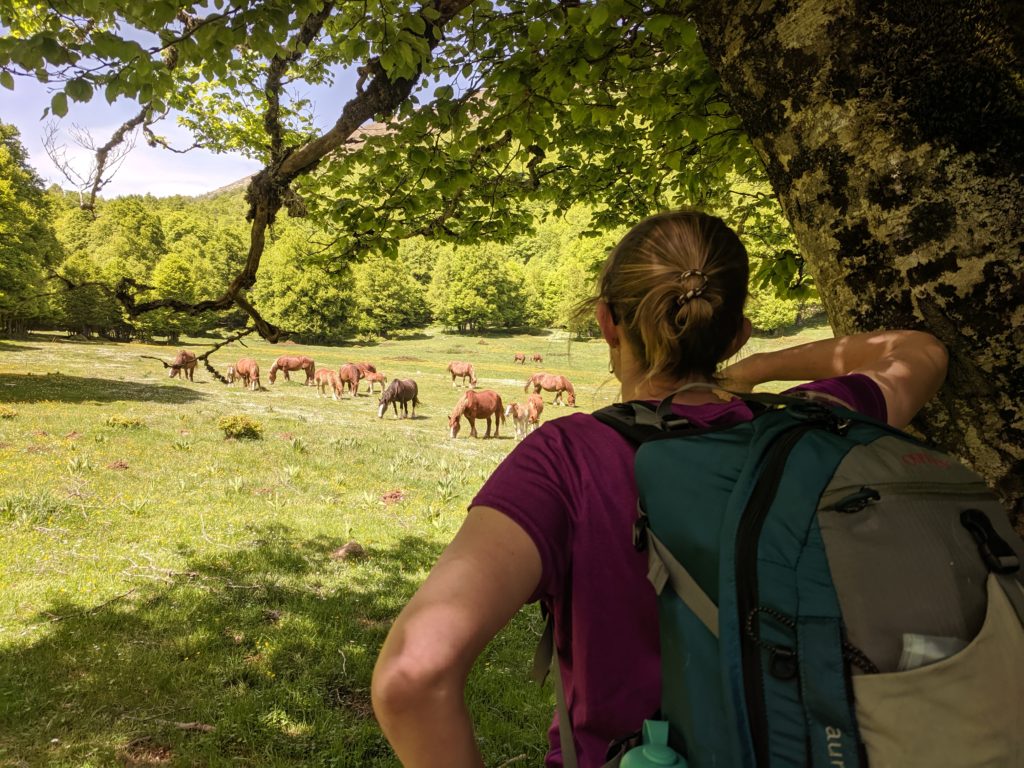
We eventually made it to the other side of the meadow where a sign for our first night’s lodging welcomed us on. After another short and gentle climb, we came upon a third meadow, in the middle of which was a tiny stone hut. Home.
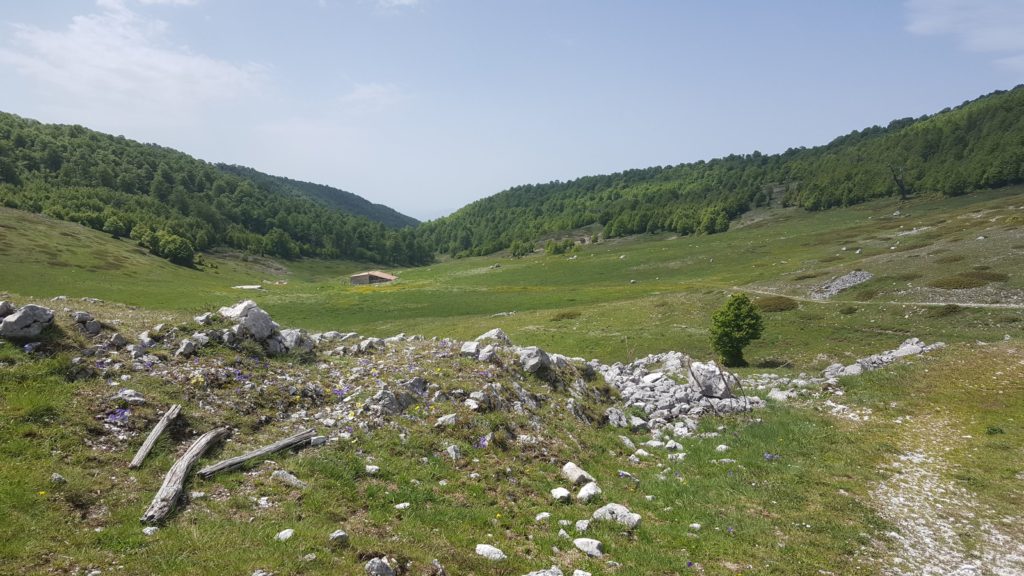
The guide at Terraegna mountain hut was relaxed out front, reading a book and enjoying the gorgeous afternoon. It turns out that he was the one who had answered my e-mails and he had even written the awesome guidebook I had purchased from the park emporium! He answered, amazingly patiently, our 1,001 questions. In summary, we learned that map reading is not a common skill and that the park lacks the resources and experience in maintaining the trail system and making it easily accessible. Most people hired guides to visit the park and to learn about the wildlife. The bears, which really are vegetarian, are also quite small, indigenous, and have always lived in the park. They are scared of humans and there are rarely any negative human-bear interactions. Instead, hikers come with guides to patiently wait and watch for bear, who are well-adored and well-photographed. There had been no need, after all, of our aggressive singing and shouting ever since we saw the bear poop.
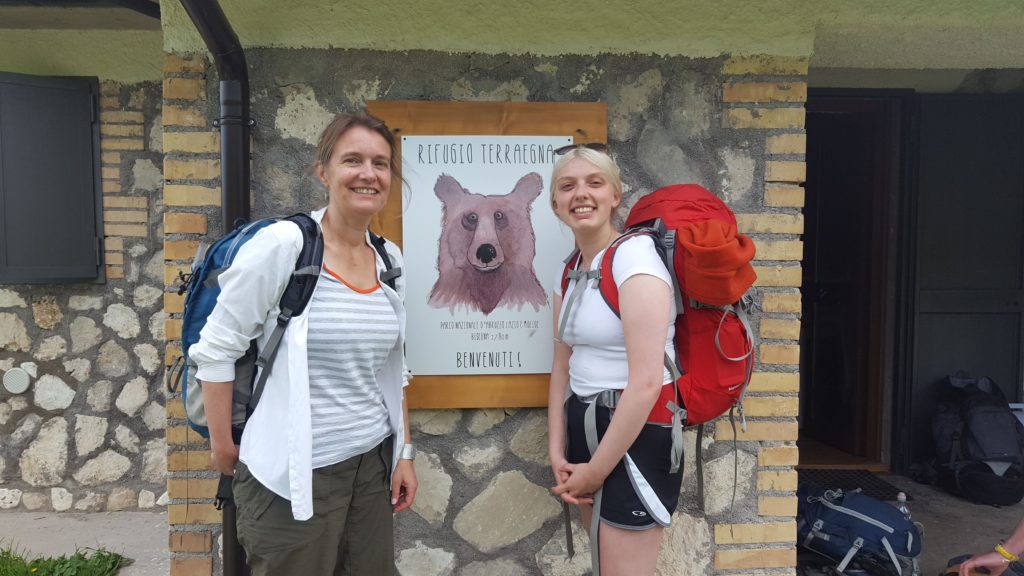
I came to imagine a traditional Italian visit to a national park more like an African safari with wise ecologically-minded guides, an eye to wildlife, and stupendous accommodation. Camping is not allowed in the park to avoid acclimating the bear to humans and to their food. The guides not only cared for us but they cared for the park, promoting awareness, conservation, and sustainable tourism. I greatly enjoyed, with a tinge of guilt, the gourmet dinner prepared by guides who had also backpacked in our food and water. Warm showers with non-potable water were briefly available while the generator was running. Total luxury. I still struggle with the idea of hiking with a stranger but I have expanded my idea of what a park visit might include and I am looking forward to a return trip.
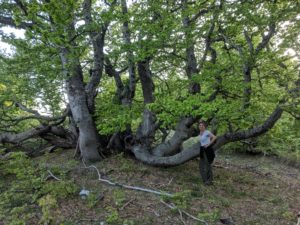
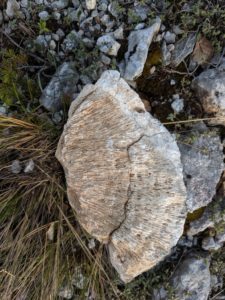
In the early evening, we hiked up the little hill behind the hut to discover an expansive vista, 800+ year old birch trees, and fossilized sea sponge. Sleeping was cool and comfortable in our own sheets and fresh white bedding in a modern bunk house.
The next day, we passed through the center of the park, crossing two roads and encountering a pair of wild boar. We hunted trail markers along the way and were very thankful for the digital map when trail markings were scarce or when our paper map disagreed with what we found in front of us. We were in great spirits when we finally arrived at the sign for our second day’s lodging. We had survived and arrived! Alas, we still had a three km uphill trudge in the sun that was hot and exhausting. Finally, we arrived at, Cicerana Ecorefugia, thirsty and very sweaty. We found a totally different beast from the first night’s lodging. This was an established café with a sense of backpacker history, cold drinks, and a well-used but also well-maintained bunk room behind the restaurant. Less luxurious and less personal but a great spot for enjoying the evening. Views to the valley allowed us to watch a heard of white cows wander home at sunset. Dinner was plentiful and delicious. Again, the other diners and lodgers were on-site primarily for guided wildlife tours. We were the only independent hikers. Note to fellow travelers, no showers here.
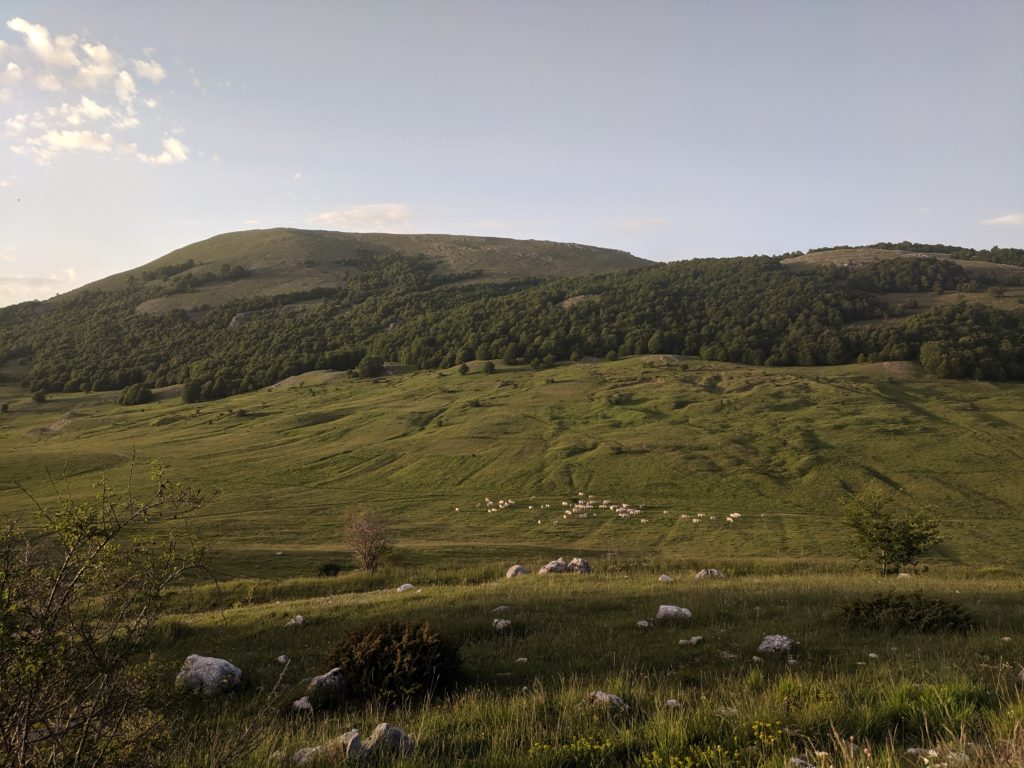
The walk back to Pescasseroli was about five hours with some ups and plenty of steep downs, rocky canyons, meadows, and more wild flowers. Although the trail was generally well-marked here, it was a great comfort to have two forms of map. We were shocked to meet other hikers wandering in the mountains without maps. At one point, I even insisted that some slightlylost hikers take a photo of our map in case they lost their way again. I am unsure if they knew what to do with it. In fact, each time we had asked a local for directions, the directions had only partially depended on the trail system. “Cross to the back side of the meadow and follow the line of trees”; “Keep the roof of the stone hut in sight and climb the hill above it.” For the locals, the mountains came first and the trails, and thus the map, provided just one of many options.
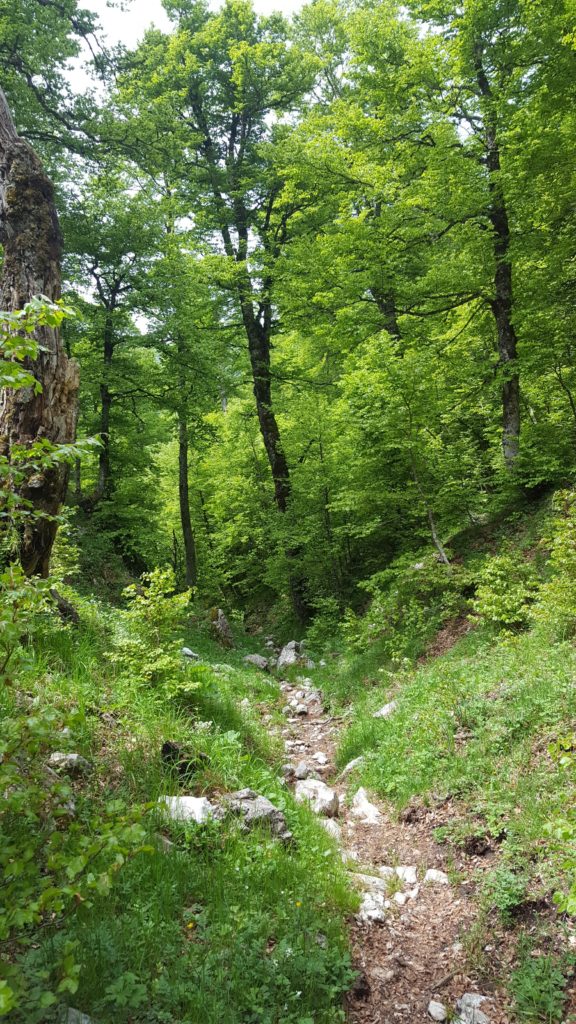
And so, over three days wandering mostly alone in the park, we discovered old forests and new ways of doing things. We ended our trip with big blisters and sore legs. I am now looking forward to visiting in every season and to experimenting with wandering in the hills alone and also with hiring a guide for an evening wildlife viewing.
